The post Tigers In The Ardennes: The 501st Heavy SS Tank Battalion in the Battle of the Bulge appeared first on World War Media.
]]>During the Battle of the Bulge in December 1944, one of the German vehicles that American soldiers feared most was the Tiger II tank, or “King Tiger.” Tigers in the Ardennes tells the story of the 501st Heavy SS Tank Battalion, a King Tiger tank unit in the Battle of the Bulge (or Ardennes Offensive, as the Germans called it). The battalion was attached to Kampfgruppe Peiper of the 1st SS Panzer Division. The abilities and liabilities of the Tiger II tank had a great effect on what Kampfgruppe Peiper could and could not accomplish.
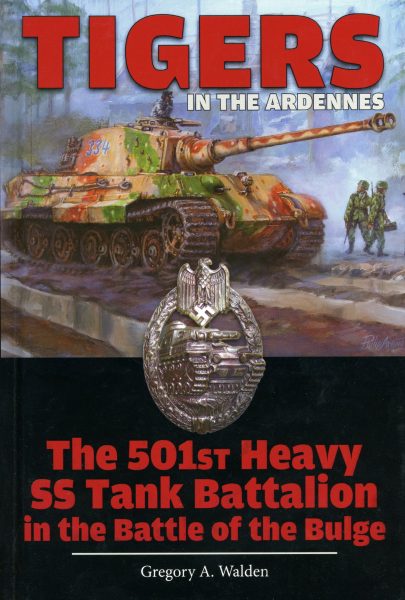
U.S. Army officer and military historian Gregory Walden provides the most detailed look at the actions of a single German battalion in the Battle of the Bulge to date. Tigers in the Ardennes is the product of years of research in archives, conversations with German and American veterans, and detailed examination of terrain in the Ardennes battlefields. The author’s experience as a tank unit commander provides unique insight into the tactical difficulties of armor movements through the Ardennes, especially considering the technical aspects of the Tiger II tanks. The book includes over 100 images, including photographs of the Tiger II tanks never before published, plus detailed maps showing the routes used by the 501st Heavy SS Tank Battalion during the battle.
Tigers in the Ardennes shows the human side of tank warfare, focusing on one German unit – how the men and their unit prepared for the battle, what they experienced (often in their own words, from interviews with veterans), how they used their powerful tanks, and the shortcomings of those tanks which eventually kept them from accomplishing their objective. The author, Gregory Walden, is a retired U.S. Army officer, with 20 years’ experience in tanks and armored units. As a tank commander and armor unit leader, the author’s perspective lends a better understanding of how the men felt as they pushed forward in the offensive, how they used their tanks to tactical advantage, and the reasons why their equipment ultimately failed them.
In addition to the stories of the soldiers who manned the tanks, the book gives detailed descriptions of the Tiger tanks. This information is presented in a listing of the tanks which took part in the battle, including names of their crews where known, their camouflage paint and other physical characteristics, and a description of what happened to the tanks during the battle. The descriptions are supported by numerous photographs and film stills taken during and after the battle. The detailed descriptions will be of interest to military historians of the Battle of the Bulge, those interested in the Tiger II tank in general, and military modelers.
As an amateur historian interested in the German armored forces of World War II, the author visited the Ardennes battlefields many times, and interviewed numerous veterans of the Battle of the Bulge. He also conducted research with Belgian historians, and in the U.S. National Archives and the German Bundesarchiv. The book includes over 100 images, including photographs of the Tiger II tanks never before published, plus detailed maps showing the routes used by the 501st Heavy SS Tank Battalion during the battle.
About The Author:
Gregory Walden is a retired U.S. Army officer and military historian. His book, Tigers in the Ardennes: The 501st Heavy SS Tank Battalion in the Battle of the Bulge, was published by Schiffer Publishing. The author’s experience as a tank unit commander provides unique insight into the tactical difficulties of armor movements through the Ardennes forest region of Belgium. A 20 year Army veteran, Greg served in Armor branch, and spent most of his service time in Cavalry units. He spent three tours of duty in Germany during the Cold War. While there he visited the Ardennes area many times to study the battle sites and meet with veterans and local historians. Greg is a member of the Company of Military Historians and of the Association of 3rd Armored Division Veterans, and lives in Florida with his wife, Susan; sons Rob and Alex; and two puppies.
ORDER YOUR COPY
Book data:
Hardcover: 144 pages
Publisher: Schiffer Military History
ISBN-10: 076434790X
ISBN-13: 978-0764347900
The post Tigers In The Ardennes: The 501st Heavy SS Tank Battalion in the Battle of the Bulge appeared first on World War Media.
]]>The post The Life And Career Of Gustav Knittel -by Timo Worst appeared first on World War Media.
]]>In the summer of 1946, a 31-year old former SS officer from the Bavarian town of Neu-Ulm, was sentenced to life imprisonment for the murders his battalion had committed in and near the Belgian town of Stavelot during the Battle of the Bulge. The author, Timo R. Worst, reconstructed Gustav Knittel’s personal life, his military career in the Waffen-SS and both his personal involvement in the grim story of that horrendous week in the Ardennes and the role the men under his command played in the murder of over a hundred civilians and unarmed prisoners of war.
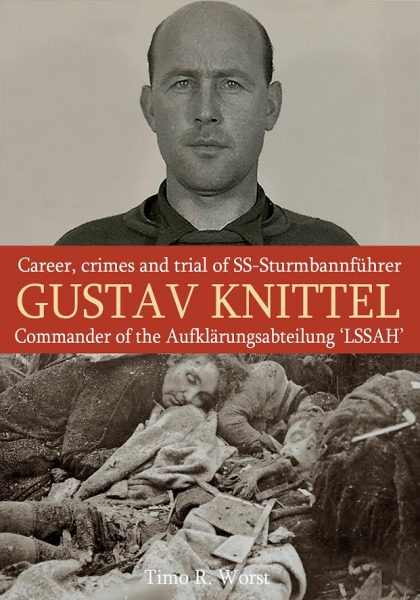
Displeased by previous published content about the SS in Stavelot and the surrounding hamlets, Worst felt compelled to visit the Ardennes himself, to search the archives and ultimately to contact veterans of Knittel’s battalion and to consult his family. By providing the available pieces of the puzzle, the author allows the reader to follow Knittel’s footsteps: his entry in the SS, the units he led traversing Europe from France and Greece to Italy, Ukraine and Belgium, the men under his command, the battles he fought and awards he won, but also his doubts about the outcome of the war and how this effected his state of mind, the massacres, his arrest, the trial and his post-war life.
This book enables the reader to see through the multiple layers of smoke created not only by Knittel, his defending lawyers or his wartime comrades, but also by his captors, his interrogators and the prosecutors.
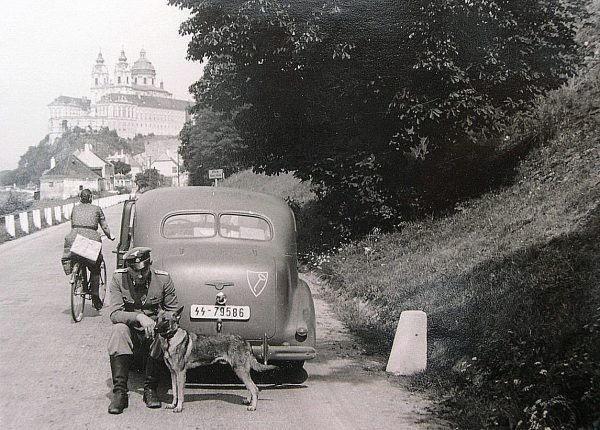
Photo Courtesy of Timo Worst
Review by Danny S Parker, author of Fatal Crossroads and Hitler’s Warrior
In this new biography of Waffen-SS officer Gustav Knittel, Timo Worst documents the life of a man who would become the head of the reconnaissance battalion of the 1st SS Panzer Division in Hitler’s Third Reich. Knittel’s life mirrors the prospects and war path of other officers in the Leibstandarte Adolf Hitler – a formation which developed an infamous reputation for brutality and war crimes in the Second World War.
How did this state of affairs come to be? Worst gives us many details which amount to a war-time mosaic of what it meant to be an SS officer in Hitler’s most favoured combat formation. With Knittel’s life as a central pivot, we gain new insight into the savage actions in which his reconnaissance battalion became engaged, both on the Eastern Front and in the West. It is then hardly surprising that as the combat heir to Kurt Meyer, Knittel’s command developed a savage reputation.
Nor did the affair end with the war. As we learn about the post war Malmédy trial and how Knittel and the others under him successfully campaigned to escape the hangman at Landsberg prison. Ultimately they were released into a Germany that bore little resemblance to the one for which they had fought from 1939-45.
While SS officers such as Peiper, Meyer and Mohnke have previously been covered in recent literature this is a new contribution with revealing details and revelations regarding Gustav Knittel. Recommended.
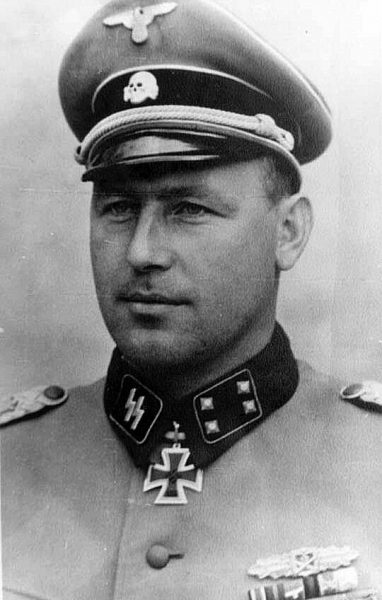
Photo Courtesy of Timo Worst
Review by Marc Rikmenspoel, author of Waffen-SS Encyclopedia
What this book really does is show that the rotten core of the SS spread to every facet of the organization. Knittel served alongside men who had important roles in crimes against humanity. Waffen-SS veteran publications only portray these men during their time as frontline soldiers, but Timo gives the full story. The picture of the Leibstandarte isn’t really a pretty one, but it is a good contrast to the HiAG version of its history.
The book is full of personal accounts by veterans. These show the reality of Eastern Front combat, in all its horror and brutality. They also demonstrate that by the time of the Normandy fighting, the Germans didn’t really stand a chance. The soldiers couldn’t openly admit that the war was lost, and the frustrations they felt were vented in a terrible way in the Stavelot area during December 1944.
I highly recommend it to anyone interested the Waffen-SS, the Eastern Front, and the Battle of the Bulge.
The post The Life And Career Of Gustav Knittel -by Timo Worst appeared first on World War Media.
]]>The post The Rifle Musket in Civil War Combat: Reality and Myth- By Earl J. Hess. Lawrence appeared first on World War Media.
]]>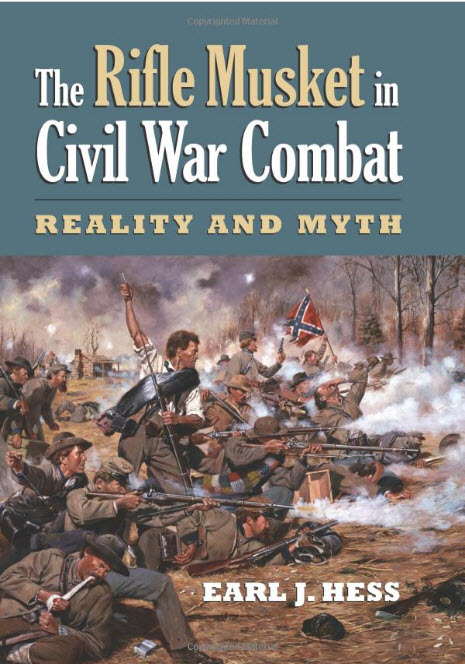
Review by Martin K.A. Morgan
At sunrise on Wednesday, August 10, 1864, the Confederate garrison inside Fort Morgan, Alabama awoke to find federal sharpshooters positioned throughout the sand dunes immediately around the structure. Marking the beginning of a two-week long siege, the sharpshooters fixed their rifle-sights on the fort and fired at anything that moved. They produced a “rain of balls” so relentless and effective that one Confederate soldier commented, “…no one can show his head above the parapet” because of the bullets “whizzing all over the fort.” The garrison considered the sharpshooters “very daring” because they crept so close to the fort – some as close as 250 yards from its masonry walls. Being prevented from firing by such accurate rifle fire, Fort Morgan’s artillery could do nothing to interfere with the landing of hundreds of fresh Union troops later that day. After sunset, 200 Union soldiers began digging trenches, filling sandbags, shaping artillery revetments and generally advancing a federal siege line that gradually tightened the noose around the old fort.
This process continued throughout the middle of August and permitted the emplacement of heavy guns and siege mortars that ultimately subjected Fort Morgan to a heavy bombardment that resulted in the garrison’s capitulation. Although the most awesome weapons available to the U.S. Navy and the U.S. Army caused the fall of Fort Morgan, Union sharpshooters did too. They suppressed the offensive firepower of a well-armed Confederate garrison and made it possible to bring up the big guns that battered the fort into submission. They accomplished this task with a weapon that fought in every Civil War clash of arms – a weapon often credited with being the most murderous instrument of warfare on the battlefield: the rifle musket.
This particular class of musket emerged during the 1830s and 1840s from a series of technological advances in shoulder fired arms and ammunition that made it possible for an individual shooter to direct accurate rifle fire against targets at greater ranges and with unprecedented accuracy. For over fifty years now, historians have deterministically interpreted the rifle musket as being the technology responsible for the extreme bloodletting so closely associated with Civil War battles.
[read more=”Click here to Read More” less=”Read Less”]
In “Civil War Infantry Assault Tactics” (Military Affairs, Summer 1961), John K. Mahon concluded that the rifle musket “caused battles to be at once much longer in time and less decisive in outcome.” He also labeled the linear, Napoleonic assault formations used throughout the conflict as obsolete when confronted with the overwhelming and accurate firepower of the rifle muskets that opposed them. Grady Mc Whiney and Perry Jamieson further developed this deterministic interpretation with their 1982 book Attack and Die: Civil War Military Tactics and the Southern Heritage. To them, the weapon’s deadly accuracy caused horrendous losses during the war’s early maneuver battles and ultimately the corresponding trend toward trenches, field fortifications and static warfare after 1864. Often referred to as the “rifle revolution” among scholars, this orthodoxy has dominated the way historians have understood the role of the weapon in the conflict. But did the rifle musket dramatically change combat during the war?
That question is answered with a direct challenge to the “rifle revolution” orthodoxy in The Rifle Musket in Civil War Combat: Reality and Myth by Earl J. Hess. In the book, the author argues that the impact of the weapon has been “exaggerated, misunderstood, and understudied ever since Union and Confederate volunteers shouldered firearms” (p. 197). The central argument of the book asserts that the rifle musket exerted “only an incremental, limited effect on Civil War combat” (p. 4) and that it therefore did not decisively alter the course of the war as the previous scholarship suggests. The Rifle Musket in Civil War Combat analyzes a series of major infantry engagements from the Western theater of the war and concludes that riflemen in linear formations typically delivered fire against their opponents at less 100 yards range.
Significantly closer than previously thought, this range barely took advantage of the rifle musket’s capability and was well within the effective range of smoothbore weapons in massed, volley fire formations. Hess compares these Civil War battles against sixteen major European clashes to prove that the smoothbore musket actually produced greater bloodshed there than the rifle did during the American Civil War. While his most dramatic insights are reserved for the rifle’s role in linear tactics, Hess admits that the weapon did indeed have an impact on skirmishing and sniping albeit a marginal one. When it is considered that sharpshooters using the rifle musket materially altered the investment/siege operations at places like Fort Morgan, it seems that the weapon may have influenced sniping more than Hess is willing to admit.
That trivial criticism aside, this provocative book offers a much needed new interpretation of a firmly entrenched and persistent myth regarding Civil War combat and should therefore be enthusiastically received by Civil War scholars.[/read]
The post The Rifle Musket in Civil War Combat: Reality and Myth- By Earl J. Hess. Lawrence appeared first on World War Media.
]]>The post The Liberator- By Alex Kershaw appeared first on World War Media.
]]>
Review By Tom Huntingdon
War is hell, but Felix Sparks, the central figure in The Liberator, learned the very hard way that hell comes in many forms. Sparks lived through sickening battles of attrition and the torment of seeing his men die in droves as his battalion fought its way through Sicily, Italy, France, and Germany. Then he discovered a whole new kind of evil when he reached a concentration camp called Dachau.
Bestselling author Alex Kershaw uses the combat-hardened Sparks to track the Seventh Army’s 45th Division, the Thunderbirds, during its long, bloody attempts to reach Germany from the south. Raised in Arizona during the hardscrabble Depression years, Sparks served a hitch in the army, left, and was drafted following Pearl Harbor, leaving behind a pregnant wife. Chafing at his role as regimental adjutant during the Sicily campaign, he asked for a combat command; he discovered he had a knack for battle, and preferred to be with his men at the front. Even after being wounded outside Ponte, Sparks insisted on returning to his unit for the brutal winter campaign in Italy.
The stalled Italian offensive, especially the carnage at the Battle of the Caves during the bungled aftermath of the Anzio landings, ushered Sparks deeper into hell: only he and one other soldier from his company survived. Promoted to command the division’s 3rd Battalion, Sparks found the invasion of southern France—”the Champagne Campaign”—to be a piece of cake in comparison. But enemy resistance stiffened as the Americans approached Germany. During the Battle of Reipertswiller in the Vosges Mountains, Sparks’s battalion, alone and exposed, fought experienced SS troops in the cold, snow, and ice, and suffered their first defeat of the war. Sparks called it his most tortured memory. Stunned by his losses—more than 600 of his thousand men—Sparks exchanged angry words with division commander Robert Frederick, who had refused to withdraw the battalion. In turn, Frederick vetoed a recommendation that Sparks receive the Distinguished Service Cross.
On April 29, 1945, Sparks received orders to liberate Dachau. At its outskirts, he and his men discovered boxcars filled with human corpses—”bodies stacked on bodies, waist-deep, stacked like cordwood,” Kershaw writes. The added horrors inside the camp pushed some of Sparks’s battle-weary men past their breaking points: they killed at least 17 of their SS prisoners being held in a coal yard. Sparks rushed back to the scene, firing his .45 into the air, and put an end to the killing. General George S. Patton later quashed an investigation. Kershaw’s account of this controversial and unsettling incident is even-handed yet compelling, particularly his depiction of Sparks, close to the edge himself, forcing a publicity-hungry American general to leave Dachau at gunpoint.
Kershaw’s accounts of the battles Sparks survived are clear and grisly and gripping. The terrors Sparks and his men endured in combat again and again prompt the question, how could they do it? The answer for Felix Sparks, as for many veteran warriors, was to turn off his emotions. “So long as he stayed numb, Sparks could fight,” Kershaw writes. Perhaps that’s why Sparks seems less of a fully fleshed-out individual than a somewhat shadowy guide, as Virgil was for Dante, on a harrowing journey—especially when he and his men grapple with the mind-bending enormity of what they find at Dachau. The Liberator is about war at the point of the spear, and it’s not pretty or reassuring. It’s hell.
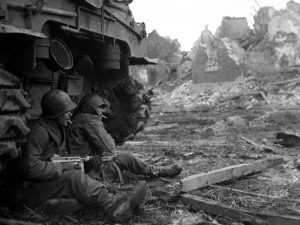
The post The Liberator- By Alex Kershaw appeared first on World War Media.
]]>The post Kampina Airborne: Airborne Evaders of the Kampina Forest! appeared first on World War Media.
]]>Kampina Airborne is the true story about one of the most unique feats of evasion during World War Two. The story also tells of the courage and determination of the people of the Dutch underground and resistance who risked their own lives and that of their loved ones to help and hide a large number of Allied military men that had been forced to make premature landings, by glider or parachute, into enemy territory.
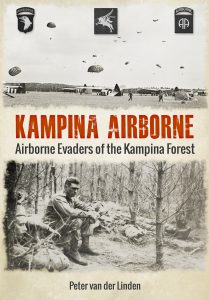
During the largest airborne operation of World War Two, as part of operation Market-Garden, not all Allied transport, glider tug aircraft and gliders would reach their designated drop and landing-zones at Eindhoven, Nijmegen and Arnhem. From day one of the operation a large number of airborne troops and aircraft personnel would be forced to make premature landings, far away from their original destinations, in enemy held territory in the province of North Brabant. These military men were not only greatly assisted by the local resistance during their escape by being safely hidden, but in some cases also brought together as a large body of men, ultimately able to participate in the liberation of the area.
Kampina Airborne tells of a group of more than eighty Allied glider-borne troops who were forced to make premature landings in the Dutch province of North Brabant.
Amongst these troops were men of the British 1st Airborne Division and the American 82nd and 101st Airborne Division. This book describes the ways in which these men were assisted by the local resistance after they had landed in enemy held territory, who their resistance helpers were and the places that these men were hidden. The story also includes information about the pilots and aircrew members of the U.S. IX Troop Carrier Command and the British Glider Pilot Regiment who were piloting the aircraft.
All their names are included together with detailed information about the events that took place plus their personal experiences during the period that they were in hiding in the area south of the North Brabant capital of ‘s-Hertogenbosch between September 17 and October 26 of 1944.
The post Kampina Airborne: Airborne Evaders of the Kampina Forest! appeared first on World War Media.
]]>The post A Matter of Honor: Pearl Harbor: Betrayal, Blame, and a Family’s Quest for Justice appeared first on World War Media.
]]>December 7, 1941 fatally wounded the reputation and legacy of Admiral Husband E. Kimmel. Despite being deprived of vital intelligence information that would otherwise have cast ominous warnings of an impending Japanese attack, Kimmel had to bear the humiliation of blame for what happened on “the Day of Infamy.”
by Martin K.A.Morgan
Forced into early retirement at the beginning of 1942, his almost four decade long Navy career ended ingloriously. Did he deserve the tarnished reputation that followed him to his death in May 1968? In A Matter of Honor: Pearl Harbor: Betrayal, Blame, and a Family’s Quest for Justice, Anthony Summers and Robbyn Swan present a powerful argument in the late Admiral’s defense. Through the sensitive examination of voluminous evidence, Summers and Swan prove that Husband Kimmel was not guilty of dereliction of duty, but rather did the best he could with the limited resources available in the Territory of Hawaii to prepare for war.
This book condenses the vast constellation of source material related to December 7th into a single, manageable volume that reconsiders the harshness of history’s previous verdict. Now that three-quarters of a century have passed since the Japanese attack that destroyed Husband Kimmel’s career, the time is ripe for a streamlined, muscular, and objective reexamination of the subject such as the one found in A Matter of Honor.

On the seventy-fifth anniversary, the authors of Pulitzer Prize finalist The Eleventh Day unravel the mysteries of Pearl Harbor to expose the scapegoating of the admiral who was in command the day 2,000 Americans died, report on the continuing struggle to restore his lost honor—and clear President Franklin D. Roosevelt of the charge that he knew the attack was coming.
The Japanese onslaught on Pearl Harbor on December 7, 1941 devastated Americans and precipitated entry into World War II. In the aftermath, Admiral Husband Kimmel, Commander-in-Chief of the Pacific Fleet, was relieved of command, accused of negligence and dereliction of duty—publicly disgraced.
But the Admiral defended his actions through eight investigations and for the rest of his long life. The evidence against him was less than solid. High military and political officials had failed to provide Kimmel and his Army counterpart with vital intelligence. Later, to hide the biggest U.S. intelligence secret of the day, they covered it up.
Following the Admiral’s death, his sons—both Navy veterans—fought on to clear his name. Now that they in turn are dead, Kimmel’s grandsons continue the struggle. For them, 2016 is a pivotal year.
With unprecedented access to documents, diaries and letters, and the family’s cooperation, Summers’ and Swan’s search for the truth has taken them far beyond the Kimmel story—to explore claims of duplicity and betrayal in high places in Washington.
A Matter of Honor is a provocative story of politics and war, of a man willing to sacrifice himself for his country only to be sacrificed himself. Revelatory and definitive, it is an invaluable contribution to our understanding of this pivotal event.
The book includes forty black-and-white photos throughout the text.[/read]
The post A Matter of Honor: Pearl Harbor: Betrayal, Blame, and a Family’s Quest for Justice appeared first on World War Media.
]]>The post Shot Down- By Steve Snyder appeared first on World War Media.
]]>SHOT DOWN
The true story of pilot Howard Snyder and the crew of the B-17 Susan Ruth
Growing up, author Steve Snyder knew the basics about his father’s war history; that Howard Snyder was a B-17 pilot; was stationed at Thurleigh, England with the 306th Bomb Group; his plane was named after his year one old daughter, Susan Ruth; he flew bombing missions over occupied Europe; he was shot down over Belgium; he was missing in action for 7 months but evaded capture; he eventually joined the French Resistance sabotaging German convoys; and at last was liberated by the U.S. Army. Even then he thought the story might make a good book, and in fact, Howard’s account of his Flying Fortress being shot down (hand-written while he was missing in action) was included in two books, First Over Germany by Russell Strong and The Mighty Eighth Gerald Astor.
However, it wasn’t until he retired in 2009 that Steve had the time to go through all the material his parents had kept from the war years to learn more details. The most significant were the many letters Howard had written to his wife, Ruth, and after reading them, Steve became absolutely fascinated with the story of his father and the crew. In fact, it became his passion. He read book after book about the air war in Europe, spent countless hours doing research on the internet downloading declassified military documents, and started attending reunions of various WW II organizations listening to veterans tell their stories. Steve is now president of the 306th Bomb Group Historical Association.
Finally in 2012, Steve decided to write a book. After the years of research, he came to the conclusion that the story of his father and the crew was so unique and so compelling that it just had to be told and people needed to read about it. SHOT DOWN was published in August 2014 and since then has received 16 national book awards.
Although SHOT DOWN is centered on Howard Snyder and his crew, it also contains detailed information about the B-17 Flying Fortress, and the combat crews of the Eighth Air Force. The first half of the book leads up to the day the plane was knocked out of the sky on February 8, 1944 by two Focke-Wulf 190s. It includes following Howard Snyder through pilot training, the crew’s journey to England, what life was like both on base and in England, and descriptions of perilous combat missions from take-off to landing. The second half is about what happened to each member of the crew after that harrowing day (five of the crew made it back, and five did not) and about all the courageous Belgian people who risked their lives to help them.
Everything in the book is factual and based on first hand testimony by the people who were involved in the events that took place. This was acquired from personal letters written by crew member and their family members, oral and written accounts by crew members, declassified military documents, and research conducted by local Belgian historians, Dr. Paul Delahaye and Jacques Lalot, who interviewed Belgian citizens and members of the Underground. Steve even found and interviewed the German Luftwaffe pilot, Hans Berger, who shot down his father’s B-17 bomber.
To complement the story, SHOT DOWN contains many excerpts from Howard’s letters, and the hardcover book includes more than 200 time period photographs. To add background and context to the story, many historical facts and anecdotes about and surrounding the war are entwined throughout the book so that a reader has a feel for and understanding of what was occurring on a broader scale.
Like most World War II veterans, Howard Snyder did not talk much about the war until he journeyed to Belgium in 1989 along with his three other living crew members to attend the dedication of a memorial erected by the Belgian American Foundation, founded by Dr. Delahaye, in honor of the crew of the Susan Ruth. Being re-united with many of his Belgian helpers and visiting houses and farms where he stayed brought all the memories back. Steve has visited Belgian three times. His last trip was in 2014 during which he was invited to visit the U.S. Ambassador to Belgium, Denise Bauer, at the Embassy in Brussels.
Howard Snyder who died at age 91 in 2007 and his fellow crew members are all gone now, but through his son’s book, SHOT DOWN, will be remembered.
The post Shot Down- By Steve Snyder appeared first on World War Media.
]]>The post And Suddenly They Were Gone-By Adam Berry appeared first on World War Media.
]]>Adam Berry’s new book, And Suddenly They Were Gone, is a remarkable addition to the collection of books about the history of the 82nd Airborne Division during the Second World War. It does an incredible job of filling a rather large gap in that history, which is the division’s time spent in England prior to the invasion of Normandy and then again after the Normandy campaign until Operation Market Garden, the invasion of Holland.
by Phil Nordyke
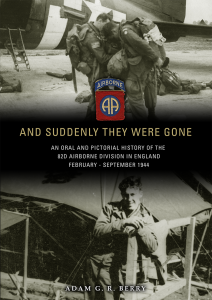
Virtually all other histories of the division and its units skim over these periods, mostly because no one until now has done the huge job of research to uncover this rich vein of untapped history until Mr. Berry’s groundbreaking work.
The book itself is a feast for the eyes, chocked full of large high quality black and white and color photos, many of which have never been previously published. There are many photos of the troopers and the local civilians who both developed a such a great bond during the division’s time spent in England. The book dedicates sections to cover each of the division’s regiments and battalions’ encampments around Leicester and Nottingham.
Mr. Berry has somehow found rare period photographs of the buildings used for headquarters, the pubs, the vast tent cities, and other significant landmarks for each of the encampments. High quality maps in the book orient the reader as to their locations. The book includes a section dedicated to the embarkation airfields, showing the division’s troopers preparing for two combat jumps and glider assault missions. It also features amazing aerial photos taken during the war of the encampments and the embarkation airfields.
There is a superb section of the book of then and now photos of the encampments, training areas, and buildings. Throughout the book, Mr. Berry includes many first person accounts by veterans of the division and the local citizens recounting their experiences.
There are a myriad of other great features in this massive book, too numerous to mention. The readers of this excellent book will be taken on a visual time travel back to that time and continually surprised with new information that is skillfully woven through this great book. And Suddenly They Were Gone is an absolute must have for readers of the history of the 82nd Airborne Division and no collection of books about the division will be complete without this tremendous work.
More from Adam Berry:
The post And Suddenly They Were Gone-By Adam Berry appeared first on World War Media.
]]>The post Vincent Speranza and the Airborne Beer appeared first on World War Media.
]]>65 Years later WWII machinegunner Vincent Speranza, from H Co 501 PIR-101st Airborne Division, returns to Bastogne. While having a good time with his European friends, the paratrooper discovers that his story has been preserved for many years… with beer!
At the wonderful 101st Airborne Museum ‘Le Mess’, Mr. Speranza shares his account of the Airborne Beer.
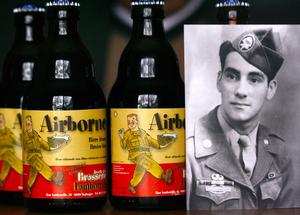
The post Vincent Speranza and the Airborne Beer appeared first on World War Media.
]]>The post No Victory in Valhalla- Ian Gardner appeared first on World War Media.
]]>Based on extensive interviews with the survivng veterans, No Victory in Valhalla relives the dramatic struggle of the famed “Screaming Eagles” paratroopers in some of the toughest fighting of World War II. Famously profiled in Band of Brothers, the division as a whole was awarded Unit Citation for its heroic defense of Bastogne – a first in the history of the US armed forces.
It’s late November 1944, after 71 days fighting in Holland, and the 506th Parachute Infantry are withdrawn having suffered heavily during Operation Market-Garden, and are looking forward to three months R&R. However, this is not to be. On December 16, 1944, the Germans launched the offensive which came to be known as the Battle of the Bulge and the 101st Airborne Division was rushed into action to stem the German tide. The ensuing large-scale combat operation would write the most dramatic chapter in the history of the 506th Parachute Infantry Regiment and Third Battalion in particular. Bitter fighting in unbearable conditions saw the battalion reduced to the size of a company before its relief on January 17.
Following this the battalion took part in the reduction of the Colmar Pocket, the Ruhr Pocket, and the liberation of the concentration camps in Germany itself, with Ed Shames being the first Allied soldier to cross the gates of Dachau. The Third Battalion finished the war occupying Hitler’s mountain retreat of Berchtesgarden, held on readiness for deployment to the Pacific until Hiroshima and Nagasaki precipitated the Japanese surrender.
This book is the final book in a gripping trilogy which includes Tonight We Die as Men and Deliver us from Darkness.
The post No Victory in Valhalla- Ian Gardner appeared first on World War Media.
]]>




